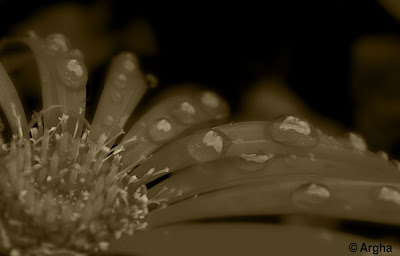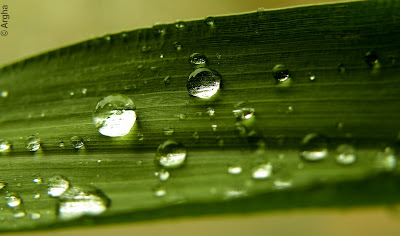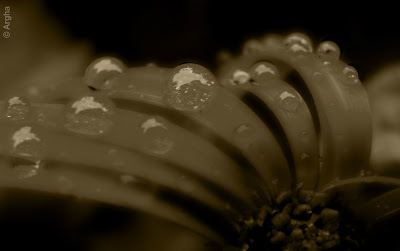Abstract photography has both confused and delighted photographers almost since the invention of the camera. Abstract whether in art or photography form, can be very personal. We are all
familiar with Pollock, Kandinsky and Picasso, great 20th century artists that painted based on their environment and live experiences. Like them or not, they were great painters that had portrayed great visual content in abstract form.
Choosing a subject of abstract form can be very challenging. However, abstract photography can be very fulfilling, in that, it opens the mind to a brand new visual experience, one that stimulates the imagination beyond the normality of perspective.
Abstract photography is a field that leaves many puzzled as to what exactly it includes. The definition varies so much by photographer and gallery, it seems like there is no common ground whatsoever. However, there are a few commonalities and motifs in abstract photography that will help clarify the field somewhat, even if there is no explicit, all-encompassing rule that all abstract photographs follow.
Abstract Photographers Have More Fun
It is from this point of view that we can now turn to look at the work of abstract photographers. For beginning photographers, especially, making abstract pictures is easy and fun. Anything can be used in the service of abstract photographers - literally. Let fly open the kitchen cupboard doors or wander your backyard during a snowstorm for inspiration. The results, whether in focus or blurred, will be abstract photographs as long as they do not depict or represent what we know as reality. The picture may remind the viewer of reality in some way, but that would be beside the point.
Abstract painters drip and pour paint; drag rags or brushes across canvas; or draw shapes with exaggerated precision and no obvious meaning. They build up paint or other material to create the painting. Abstract photographers begin with an object in reality and reduce, enlarge upon, or blur it beyond recognition.
Abstract photography is not just about shooting the image in its entirety. The perception of abstract photography has intrinsic values. The photographer not only concentrates on lines, forms and textures, but the compatibility of colours along with composition to achieve a great image. Abstract photography is the abstraction of part of an image that makes up the whole image. You remove all aspects of the image to reveal its artistic value.
It is amazing what you can find to photograph in an abstract way. Look around your home, your food cupboard, your fruit bowl and jewellery, all these make an ideal subject and will challenge your creativeness. Most abstract photography requires close focus to do it any justice. For example; you can use a 110mm macro lens that allows you to be 2cm away from your subject or, any short lens that allows you to focus in closely.
To make your subject even more interesting, try spraying water on it or vary your lighting with various filters. This will not just enhance the image, but will transform it into something captivating and intriguing to the viewer. When editing your image in Photoshop, de-saturating the image to black and white and then adding little colour brings out key aspects of the image.
Water droplets can be photographed in many intresting ways.I shot these droplets on a rainy day.
In essence, abstract photography is not a true reflection of the natural world. This is the beauty of it. It concentrates on a certain characteristic of the subject in an aesthetic way, and so the abstraction of a particular image becomes art. It draws you in and challenges you, it can move you, and it compels you to ask questions. It can be minimal, busy, colourful, dark and mysterious. You do not have to be a professional photographer to produce good abstract photography, nevertheless having some knowledge of the equipment and a good visual awareness will make this a fun thing to do whether for a hobby or professional pursuits.
Subject & Composition
The most common reaction to abstract photographer is probably an incredulous, curious,
What is that? Many abstract photos have no clear or discernible subject, while others try and make the subject appear like an entirely unlike object.
Most abstract photographers focus on the everyday objects around them, familiar things that they show us through their third eye to be less familiar than we like to think, turning sunny suburban sidewalks into dark noir landscapes, grass into exact geometric designs. Our daily life is transformed from something we are entirely used to something we are not entirely at home with.
Many abstract photographs are minimalistic, isolating a subject. Roadways are obscured beneath the snow with nothing but vague shadows to show the way, or a single droplet is left in crisp focus against a soft blur of the background. Simplicity of composition is another common trait of abstract photographs—through utter chaos of form is almost as common. The busy meanderings of twisted spider webs leave our eyes confused without a single place to rest upon, just as the dusty mess of an abandoned house or the fallen leaves of dozens of trees mixed together.
Intresting colors can be added to the photo during post-processing and refining the image
Color
Especial attention to color is paid by abstract photographers. Many seek color harmonies, focusing on the symphony of similar colors in the highlights and lowlights of hair, or
rust stains on old cold iron.
Others still seek to point out the exact same hue of entirely unlike objects. A bright green grasshopper may be juxtaposed next to someone's eyes, or a wedding ring next to a doorknob. Still others try to show complete contrast. The use of color filters is a very common technique. Rainbows may be splayed across otherwise color-drained photographs of cities, or the undercanopy of a forest turned to a distinctly underwater shade of aquamarine. Similarly, color isolation is another technique often utilized. A girl in a bright red dress in a blurry black & white city, a single leaf on a tree remaining green. Of course, there are countless other color techniques and effects pioneered by abstract photographers, many of which have since moved into other fields of photography.
Texture
Another factor that many abstract photos have in common is close attention to texture. Repeating patterns are a favorite of many abstract photographers, from the repetition of black umbrellas in a rainy city to dozens of converging parallel lines looking down a road into the distance with its sidewalks and powerlines. A common extension of this is a single, conspicuous break in the pattern, a blank spot in a line of plates, or an unusual gap between a crowd of people walking down a sidewalk.Just as common is the complete lack of pattern, utter chaos, from the clutter on the bedroom floor to the random placement of bathroom stall graffiti. Texture filters, from dust speckles to exaggerated noise to drip patterns are often utilized, either applied in a digital image editing program or on-site with pieces of glass or plastic placed in front of the lens.
Subjectivity
As this article has demonstrated, there is tremendous variety in the field of abstract photography. What determines a good abstract photo is similarly varied, determined
entirely by the user. What may deeply please one person may attract no interest whatsoever from another—sometimes for exactly the same reason. Indeed, much of the appeal in abstract photography is the incredible amount of interpretation left up to the viewer.
Nor is it impossible for an amateur to get involved in abstract photography: because of its incredible variety, personal style and the subjective experience reigns. Some find this distasteful, others liberating; just another subjectivity. Abstract photography, because of the sheer amount of imagination and creativity involved in the process, also serves as an excellent exercise for photographers of other fields to help improve their craft in general, building skills in attention
to detail, color and texture, and stretch the boundaries of their own personal style with experimentation. It's a wonderful type of photography to explore—try it for yourself.

 Slimy snail looking for alternative route..
Slimy snail looking for alternative route..








